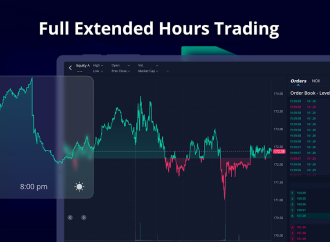Introduction: A troubling discovery has emerged from the spice racks of households across India—a revelation that has sent shockwaves through communities and raised urgent concerns about public health. Let’s delve into the unsettling findings as an international agency uncovers cancer-causing chemicals lurking in popular Indian spice brands. 1. Unveiling the Investigation: International Agency’s Alarming Discovery
Introduction:
A troubling discovery has emerged from the spice racks of households across India—a revelation that has sent shockwaves through communities and raised urgent concerns about public health. Let’s delve into the unsettling findings as an international agency uncovers cancer-causing chemicals lurking in popular Indian spice brands.
1. Unveiling the Investigation: International Agency’s Alarming Discovery
Embark on the journey of uncovering the investigation led by the international agency that shed light on the presence of cancer-causing chemicals in popular Indian spice brands. Delve into the methodology, scope, and significance of this groundbreaking revelation.
2. Analyzing the Culprit: Identifying Hazardous Chemicals in Spices

Image by: https://www. the statesman.com
Peel back the layers of scientific analysis as experts pinpoint the hazardous chemicals detected in the tested Indian spice brands. Explore the known health risks associated with these substances and their potential impact on consumer safety and well-being.
3. Public Health Implications: Understanding the Risks for Consumers
Delve into the public health implications of consuming spices contaminated with cancer-causing chemicals. Examine the potential long-term health risks, including increased cancer incidence and other adverse health effects, for individuals exposed to these substances through regular consumption.
4. Consumer Awareness and Empowerment: Navigating Safe Food Choices
Empower consumers with knowledge and tools to make informed decisions about their food choices in light of the recent findings. Explore strategies for identifying and avoiding spice brands implicated in the investigation, as well as advocating for greater transparency and accountability in food safety practices.
5. Industry Accountability and Regulation: Calls for Action
Examine the role of industry stakeholders and regulatory bodies in addressing the issue of contaminated spices and safeguarding consumer health. Discuss the need for stringent quality control measures, testing protocols, and regulatory oversight to prevent the proliferation of harmful chemicals in food products.
6. International Collaboration and Risk Mitigation Strategies
Highlight the importance of international collaboration and information sharing in addressing global food safety challenges. Explore risk mitigation strategies employed by governments, industry partners, and public health agencies to monitor, regulate, and mitigate the risks associated with contaminated spices.
7. Community Engagement and Advocacy: Mobilizing for Change
Inspire community engagement and advocacy efforts aimed at promoting food safety awareness and advocating for systemic changes in the spice industry. Explore grassroots initiatives, consumer campaigns, and public education efforts geared towards raising awareness and driving positive change.
8. Transparency and Accountability: Towards a Safer Food Future

Image by: https://i monkey-blog. imgix .net
Call for greater transparency and accountability in the spice supply chain, from farm to fork, to ensure the safety and integrity of food products. Advocate for traceability measures, quality assurance standards, and ethical sourcing practices to build consumer trust and confidence in the food industry.
9. Empowering Healthier Choices: Alternatives and Substitutions
Provide practical tips and alternatives for consumers looking to reduce their exposure to contaminated spices and make healthier food choices. Explore organic options, DIY spice blends, and alternative sources for fresh, safe, and flavorful ingredients.
10. Conclusion: A Call to Action for Safe and Sustainable Food Systems
Conclude with a resounding call to action for all stakeholders—consumers, industry players, policymakers, and advocates—to prioritize food safety and sustainability in building resilient and equitable food systems. Emphasize the collective responsibility to safeguard public health and ensure access to safe, nutritious, and culturally diverse foods for all.
Visual Table for Key Points:
| Key Points | Description |
|---|---|
| Investigation Discovery | Scope and significance of the international investigation |
| Identified Hazardous Chemicals | Health risks associated with detected substances |
| Public Health Implications | Potential health impacts on consumers |
| Consumer Awareness and Empowerment | Strategies for making informed food choices |
| Industry Accountability and Regulation | Role of stakeholders in ensuring food safety |
| International Collaboration | Global efforts to address food safety challenges |
| Community Engagement and Advocacy | Grassroots initiatives and consumer campaigns |
| Transparency and Accountability | Importance of traceability and quality assurance |
| Healthier Choices and Alternatives | Options for reducing exposure to contaminated spices |
| Call to Action | Collective responsibility for building safer food systems |
Through the lens of the recent investigation into contaminated Indian spice brands, this article aims to raise awareness, empower consumers, and catalyze action towards building safer and more sustainable food systems for the future.




















